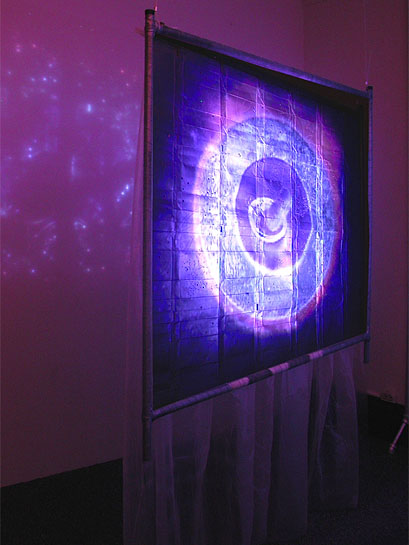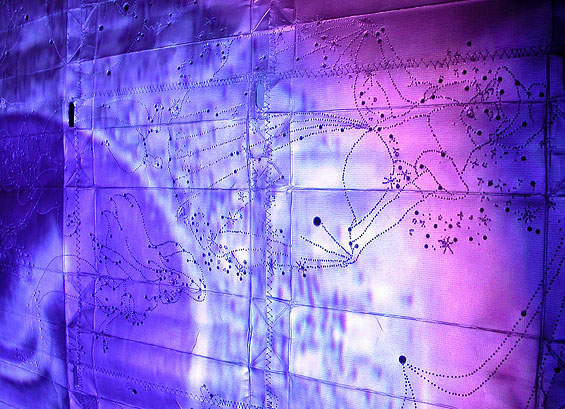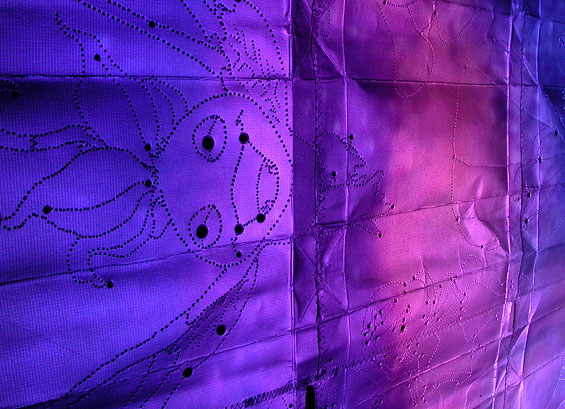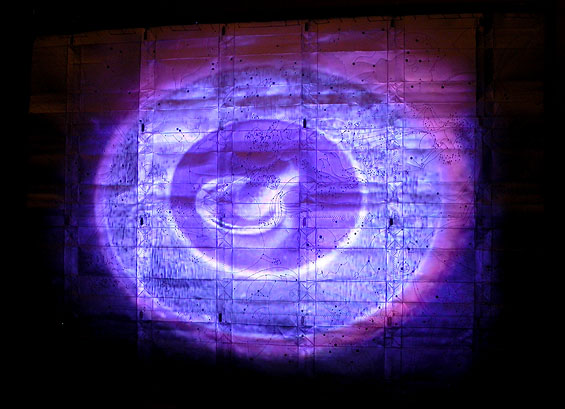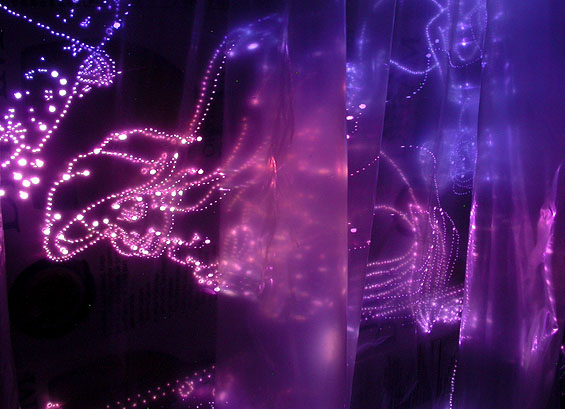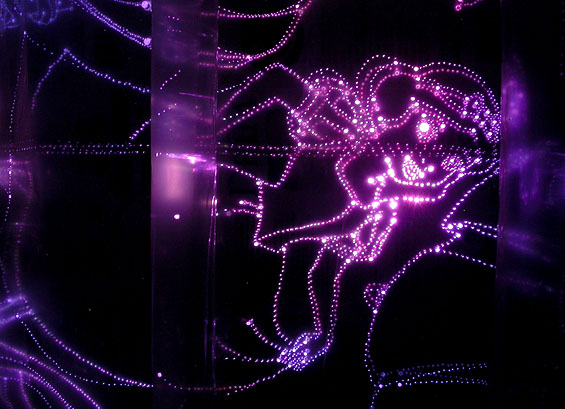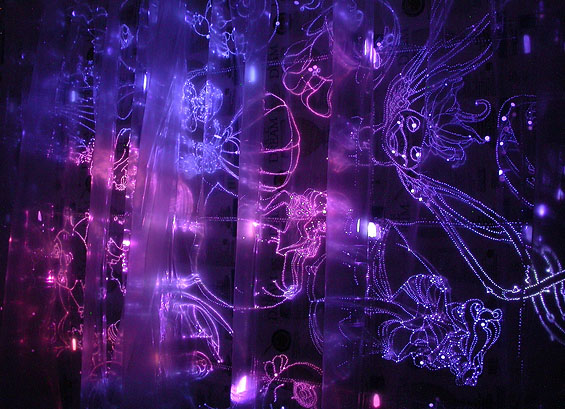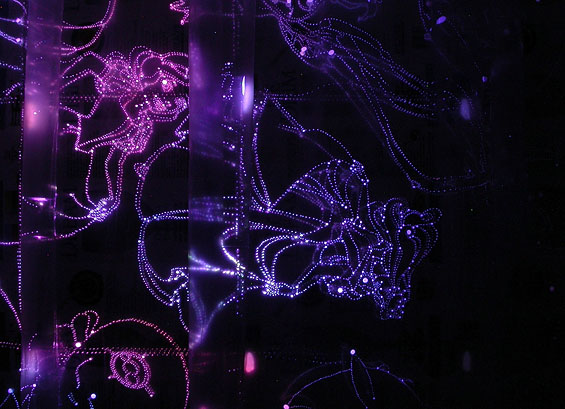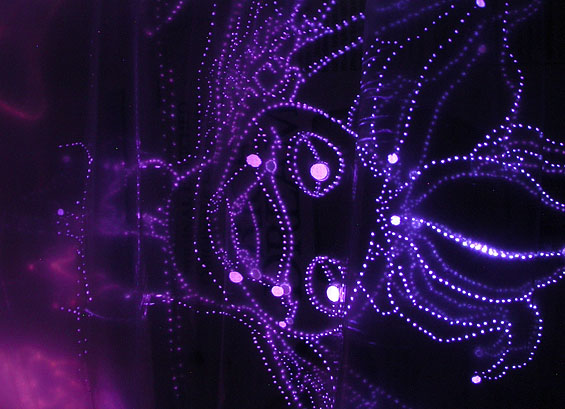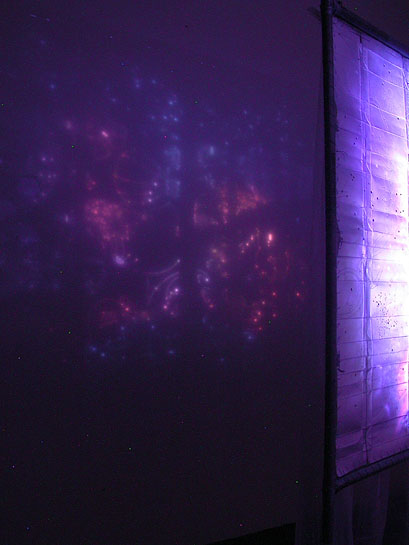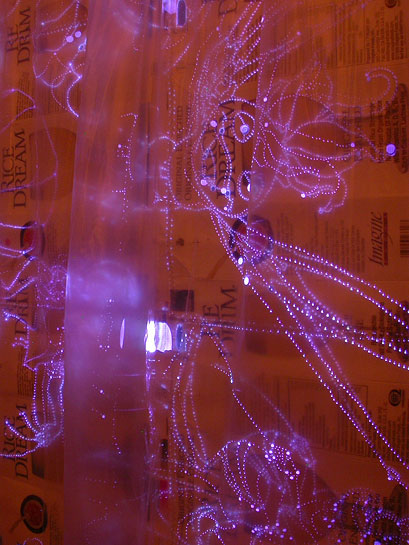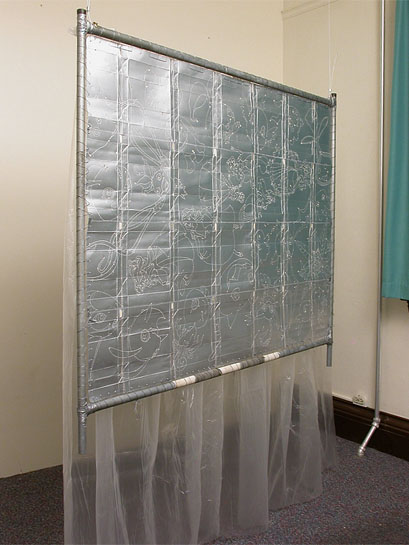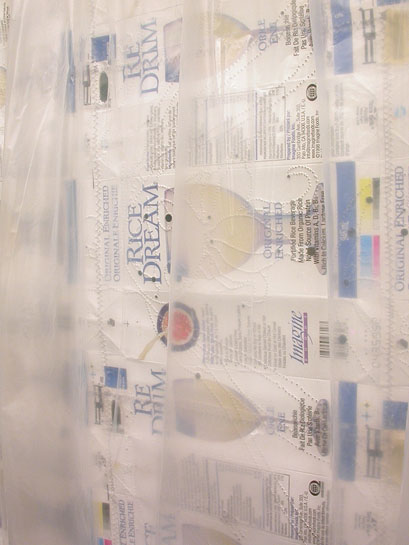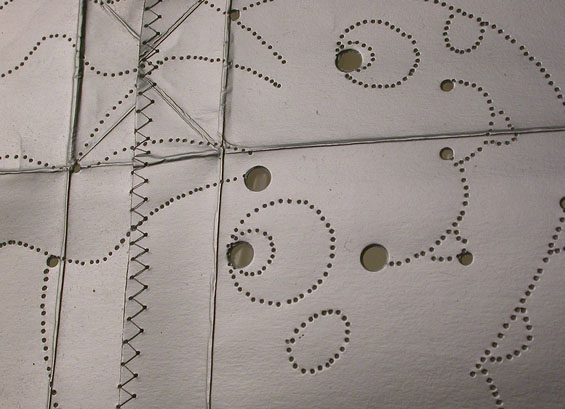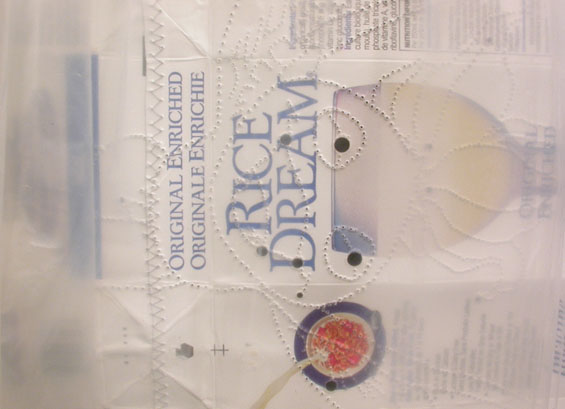The First Occupation, 2005
Installation
projected video loop, sewn and perforated tetra-pak screen, suspended frame, and polyethylene curtain; 48 x 54 inches
This is one of many projects based on the ideas of Friedrich Fröbel (1782-1852), the German educator who designed, implemented and named the first kindergarten program. Fröbel’s program fashioned itself around a philosophy of unity, leading children to manipulate materials through various exercises (called “Gifts” and “Occupations”) to address forms of Nature, Knowledge and Beauty. Key modernist architects, such as Frank Lloyd Wright and Le Corbusier, passed through the program in its heyday, and some writers have made the case that it provided the seed-pearl of modernism.
Through an intimate exploration and reinvention of Fröbel’s exercises, Clark Espinal’s contemporary manifestations serve to highlight the parallels between Fröbel’s concepts and modernist ideals and how they relate to present-day issues. The First Occupation is a video projection on a screen made from perforated tetra-paks [an action based on the exercises of Fröbel’s first Occupation (Perforation). The perforations illustrate a “galaxy” of cartoon characters illuminated by the spinning action of a video projection. In a world saturated by consumerism and marketing, Fröbel’s system of learning through play draws us back to a time, perhaps idealized, when we were discovering our connection to the universe.
